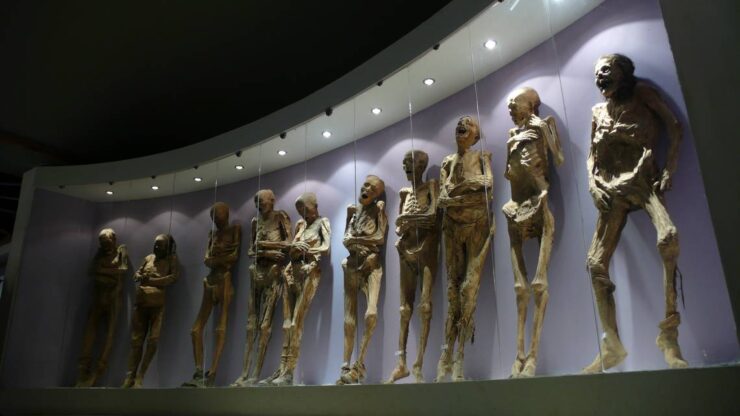Damage to one of the mummies brought to the tourism fair in Mexico City from the famous Museum of Mummies in Guanajuato has experts suspicious.
Concern was voiced by experts from the Mexico National Institute of Anthropology and History regarding “fungal growths” discovered on one of the exhibits at the Guanajuato Museum of Mummies. According to them, the virus may be dangerous for guests.
The Guanajuato Mummies are naturally mummified bodies buried during a cholera epidemic in Guanajuato, Mexico. Guanajuato’s climate was conducive to a form of natural mummification, but later scientific studies revealed that some of the bodies were partially mummified.
The human bodies appear to have been buried between 1870 and 1958. At the time, a local tax was in place that required a fee to be paid for burial. Some bodies that did not pay the tax were not buried, while others – those in the best condition – were stored in a nearby building. By the 1900s, mummies became a tourist attraction. Cemetery workers began charging people a few pesos to enter the building where the bones and mummies were stored. It was later turned into a museum called El Museo de las Momias (“The Museum of Mummies”) in 1969. As of 2007, 59 of the total collection of 111 mummies were on display.
More than 4,000 visitors a week come to see murder victims, executed criminals and babies buried in saints’ clothes to ease their way to heaven. Rumor has it that, in addition to those who died from the cholera epidemic, there are also those who were buried alive. However, this information has not been officially confirmed.
Exhibits are occasionally loaned to other museums; for instance, some Mexican mummies toured the United States. Mummies are currently being displayed at a travel expo in Mexico City. But, this action can be risky, according to a statement from the Mexican National Institute of Anthropology and History. Mummies would be shown in glass exhibits at the expo, according to the authorities, but the institute’s experts disavowed this choice, claiming they were not consulted.
“It is worrying that people are being exposed without guarantees of compliance,” experts say. “Judging from some photographs, at least one of the bodies examined and displayed at the institute in November 2021 shows signs of possible fungal colonies. A thorough study is needed beforehand to determine whether this poses a risk to those who handle and view them.” The type of fungus that alarmed experts has not been reported.
